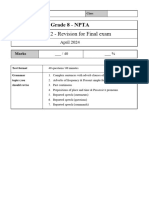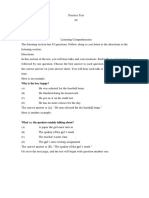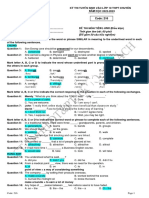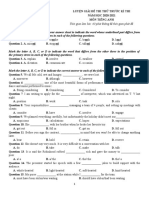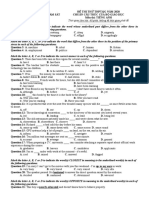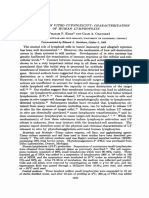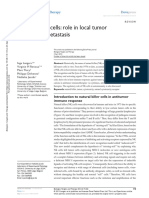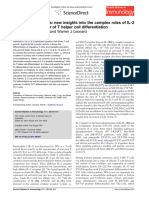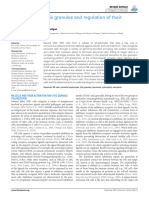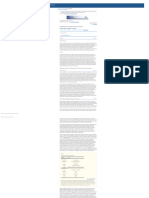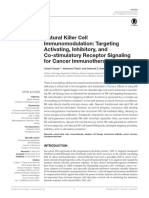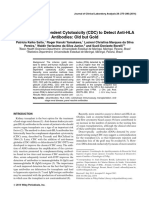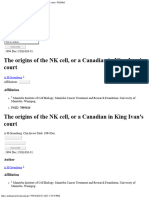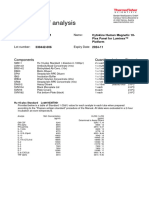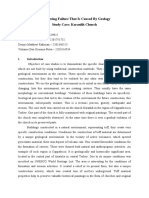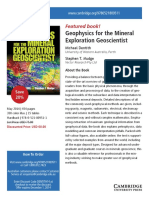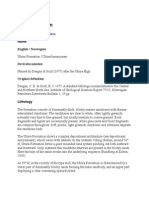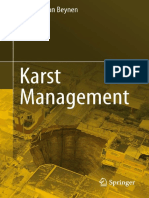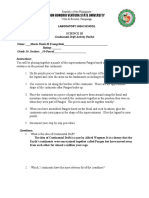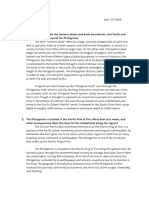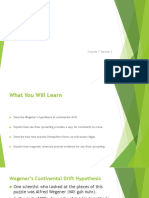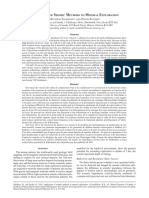0% found this document useful (0 votes)
49 views7 pagesB2 Practice Part 2
The document is an English practice test that assesses listening, reading, and writing skills at level B2. It contains 3 sections - listening comprehension, reading comprehension, and writing. The listening comprehension section has 3 parts with multiple choice questions about short announcements or conversations. The reading comprehension section contains passages followed by multiple choice questions to test understanding of details and inferences.
Uploaded by
hoangphuong08101992Copyright
© © All Rights Reserved
We take content rights seriously. If you suspect this is your content, claim it here.
Available Formats
Download as PDF, TXT or read online on Scribd
0% found this document useful (0 votes)
49 views7 pagesB2 Practice Part 2
The document is an English practice test that assesses listening, reading, and writing skills at level B2. It contains 3 sections - listening comprehension, reading comprehension, and writing. The listening comprehension section has 3 parts with multiple choice questions about short announcements or conversations. The reading comprehension section contains passages followed by multiple choice questions to test understanding of details and inferences.
Uploaded by
hoangphuong08101992Copyright
© © All Rights Reserved
We take content rights seriously. If you suspect this is your content, claim it here.
Available Formats
Download as PDF, TXT or read online on Scribd
/ 7












